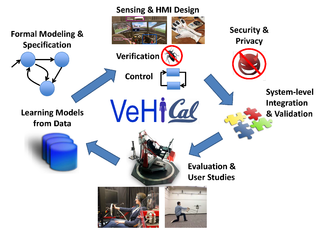| NSF Org: |
CNS Division Of Computer and Network Systems |
| Recipient: |
|
| Initial Amendment Date: | September 2, 2016 |
| Latest Amendment Date: | August 29, 2019 |
| Award Number: | 1544714 |
| Award Instrument: | Continuing Grant |
| Program Manager: |
Ralph Wachter
rwachter@nsf.gov (703)292-8950 CNS Division Of Computer and Network Systems CSE Directorate for Computer and Information Science and Engineering |
| Start Date: | September 1, 2016 |
| End Date: | August 31, 2021 (Estimated) |
| Total Intended Award Amount: | $550,000.00 |
| Total Awarded Amount to Date: | $550,000.00 |
| Funds Obligated to Date: |
FY 2018 = $300,000.00 FY 2019 = $100,000.00 |
| History of Investigator: |
|
| Recipient Sponsored Research Office: |
1200 E CALIFORNIA BLVD PASADENA CA US 91125-0001 (626)395-6219 |
| Sponsor Congressional District: |
|
| Primary Place of Performance: |
1200 E. California Blvd Pasadena CA US 91125-0001 |
| Primary Place of
Performance Congressional District: |
|
| Unique Entity Identifier (UEI): |
|
| Parent UEI: |
|
| NSF Program(s): | CPS-Cyber-Physical Systems |
| Primary Program Source: |
01001819DB NSF RESEARCH & RELATED ACTIVIT 01001920DB NSF RESEARCH & RELATED ACTIVIT 01002021DB NSF RESEARCH & RELATED ACTIVIT |
| Program Reference Code(s): |
|
| Program Element Code(s): |
|
| Award Agency Code: | 4900 |
| Fund Agency Code: | 4900 |
| Assistance Listing Number(s): | 47.070 |
ABSTRACT
![]()
This NSF Cyber-Physical Systems (CPS) Frontier project "Verified Human Interfaces, Control, and Learning for Semi-Autonomous Systems (VeHICaL)" is developing the foundations of verified co-design of interfaces and control for human cyber-physical systems (h-CPS) --- cyber-physical systems that operate in concert with human operators. VeHICaL aims to bring a formal approach to designing both interfaces and control for h-CPS, with provable guarantees.
The VeHICaL project is grounded in a novel problem formulation that elucidates the unique requirements on h-CPS including not only traditional correctness properties on autonomous controllers but also quantitative requirements on the logic governing switching or sharing of control between human operator and autonomous controller, the user interface, privacy properties, etc. The project is making contributions along four thrusts: (1) formalisms for modeling h-CPS; (2) computational techniques for learning, verification, and control of h-CPS; (3) design and validation of sensor and human-machine interfaces, and (4) empirical evaluation in the domain of semi-autonomous vehicles. The VeHICaL approach is bringing a conceptual shift of focus away from separately addressing the design of control systems and human-machine interaction and towards the joint co-design of human interfaces and control using common modeling formalisms and requirements on the entire system. This co-design approach is making novel intellectual contributions to the areas of formal methods, control theory, sensing and perception, cognitive science, and human-machine interfaces.
Cyber-physical systems deployed in societal-scale applications almost always interact with humans. The foundational work being pursued in the VeHICaL project is being validated in two application domains: semi-autonomous ground vehicles that interact with human drivers, and semi-autonomous aerial vehicles (drones) that interact with human operators. A principled approach to h-CPS design --- one that obtains provable guarantees on system behavior with humans in the loop --- can have an enormous positive impact on the emerging national ``smart'' infrastructure. In addition, this project is pursuing a substantial educational and outreach program including: (i) integrating research into undergraduate and graduate coursework, especially capstone projects; (ii) extensive online course content leveraging existing work by the PIs; (iii) a strong undergraduate research program, and (iv) outreach and summer programs for school children with a focus on reaching under-represented groups.
PUBLICATIONS PRODUCED AS A RESULT OF THIS RESEARCH
![]()
Note:
When clicking on a Digital Object Identifier (DOI) number, you will be taken to an external
site maintained by the publisher. Some full text articles may not yet be available without a
charge during the embargo (administrative interval).
Some links on this page may take you to non-federal websites. Their policies may differ from
this site.
PROJECT OUTCOMES REPORT
![]()
Disclaimer
This Project Outcomes Report for the General Public is displayed verbatim as submitted by the Principal Investigator (PI) for this award. Any opinions, findings, and conclusions or recommendations expressed in this Report are those of the PI and do not necessarily reflect the views of the National Science Foundation; NSF has not approved or endorsed its content.
The overall VEHICaL project, a collaboration between UC Berkeley, Caltech, and UNC-Chapel Hill focused on the problem of "co-design" of interfaces and control for human cyber-physical systems (h-CPS) --- cyber-physical systems that operate in concert with human operators. Examples of human cyber-physical systems such as self-driving cars require engineering methods that provide strong guarantees of safety, and this project has helped develop engineering approaches that can be used to design systems that the public can trust.
Caltech's work on this project concerned the development of techniques with specific application to "rules of the road" for self-driving cars. The ability to guarantee safety and progress for all vehicles is vital to the success of the autonomous vehicle industry. We developed a framework for designing autonomous vehicle behavior in a way that is safe and guarantees progress for all agents. We did this by introducing a new mathematical paradigm which we term the "quasi-simultaneous game". We then define a set of rules that that all vehicles must use to make decisions in this quasi-simultaneous game setting. According to the protocol, vehicles first select an intended action using a behavioral profile. Then, the protocol defines whether a vehicle has precedence to take its intended action or must take a sub-optimal action. The protocol ensures safety under all traffic conditions and liveness for all agents under `sparse' traffic conditions. We provide proofs of correctness of the protocol and validate our results in simulation.
Last Modified: 12/12/2021
Modified by: Richard M Murray
Please report errors in award information by writing to: awardsearch@nsf.gov.




